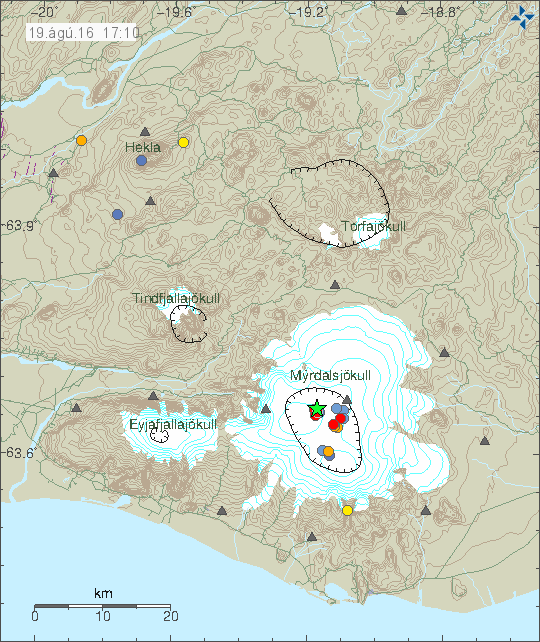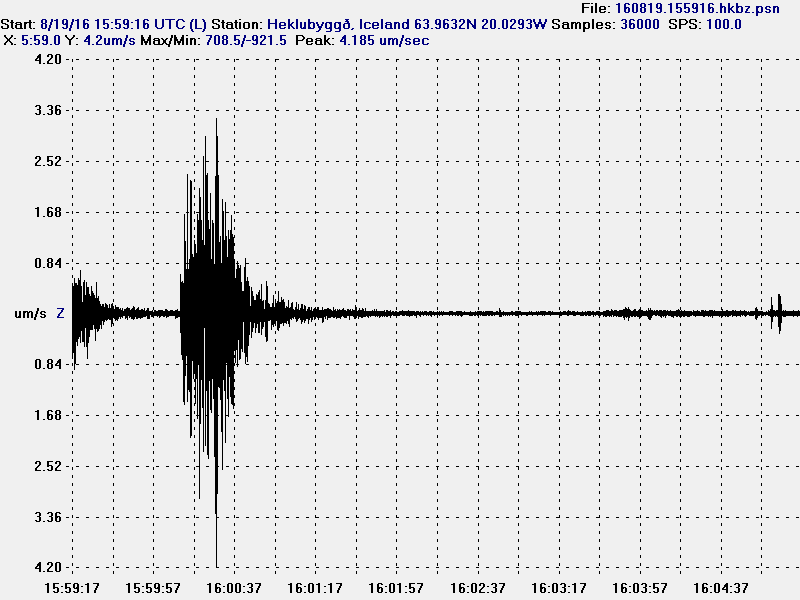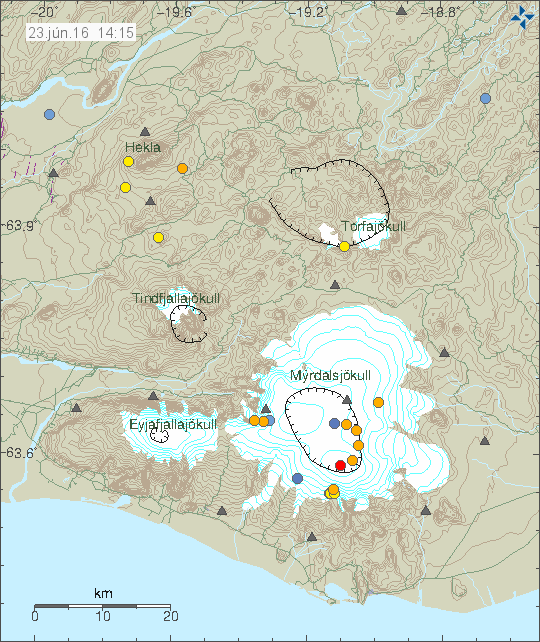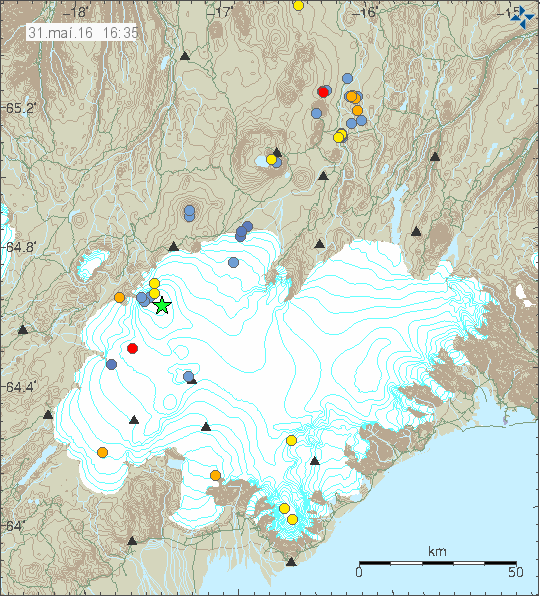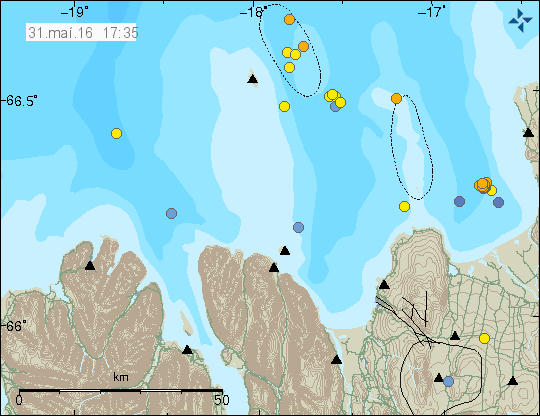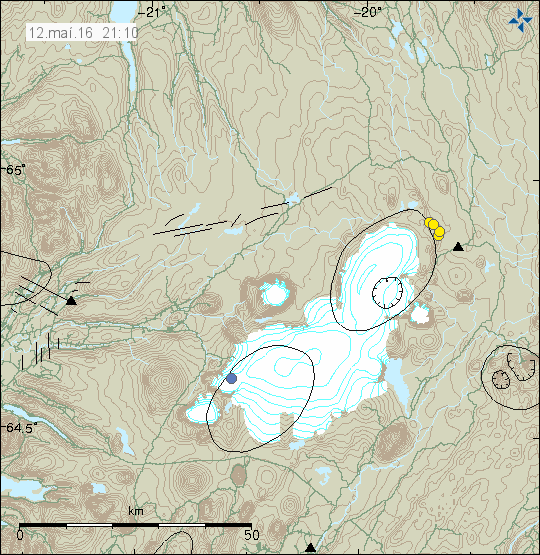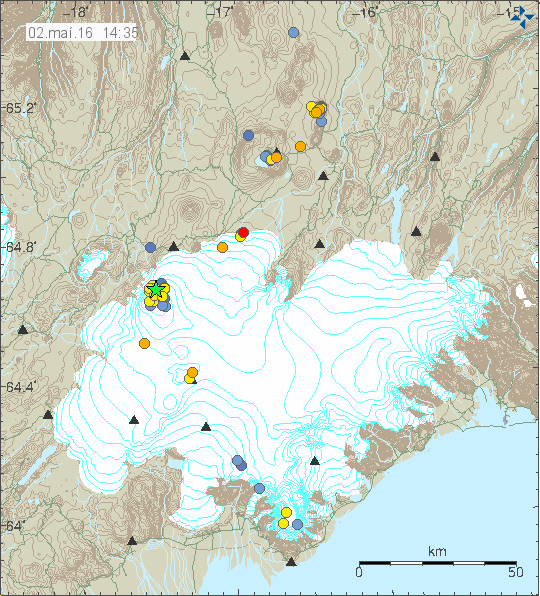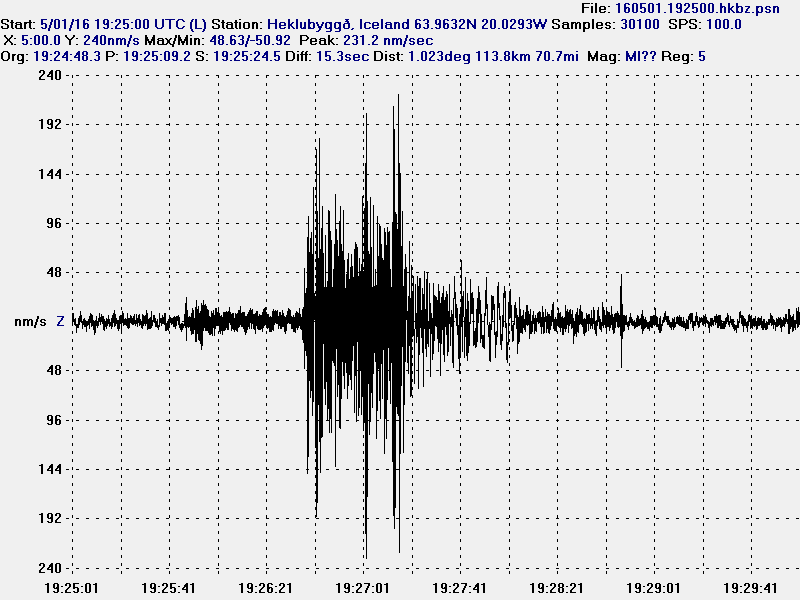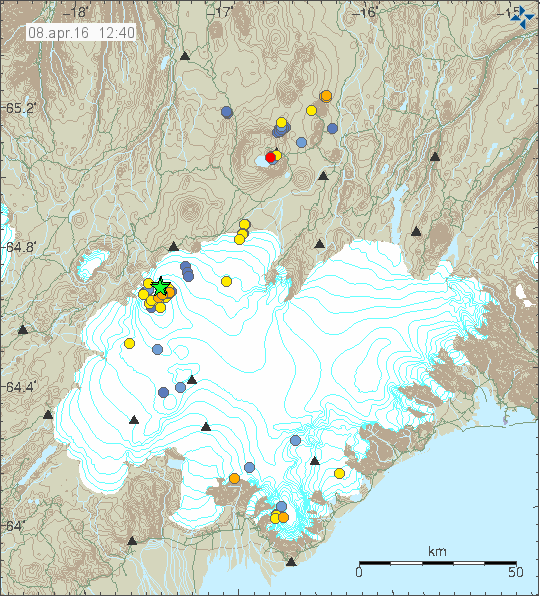This the first analyse article that I’m going to write. It is going to a short one and not written over few days, as is the plan to have them in the future. The reason for this is that this information might get outdated quickly as things change in Bárðarbunga volcano. This is going to be broken down into few parts for clarity (if possible).
Current activity in Bárðarbunga volcano
Bárðarbunga volcano is preparing for a new eruption and has been doing so since March-2015, few days after the eruption ended in Holuhraun. Where this eruption is going to take place is impossible to know fore sure, but there are clues to what might happen (it doesn’t mean it is going to). Current earthquake activity pattern suggests that the next eruption is going to take place directly south of Bárðarbunga volcano, slightly south of the Holuhraun dyke formation. At that location there is a dyke formation that has been building up for the last few years and in recent months I’ve noticed a slight increase in activity around that dyke, it has been making branches from it self, creating small earthquakes swarms in the process. I don’t know how large this dyke is, but what is clear from earthquake data is that it is deep, goes down to at least 25 km depth, maybe deeper.
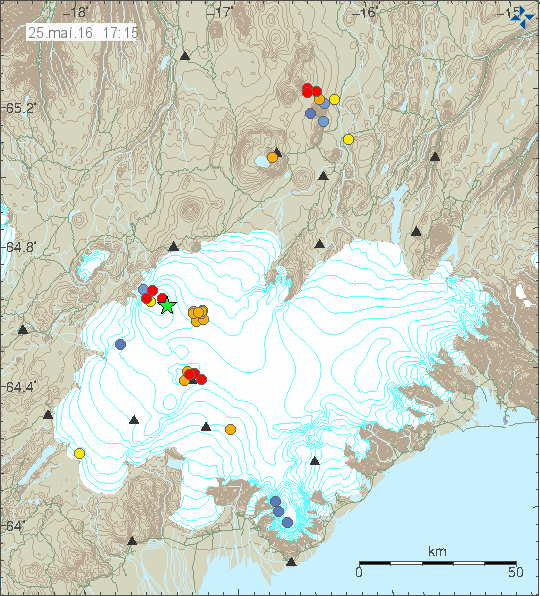
The cluster of orange dots is the dyke showing it self earlier today. Copyright of this image belongs to Iceland Met Office.
Since the activity started in Bárðarbunga volcano, this dyke has changed and appears to have started growing at some point (I don’t know when). Current size suggest that it is already large and contains large amount of magma. Amount is hard to estimate, but pure guess (short of educated) suggests that the amount of magma in this one dyke is already high and more might be at depth (25+ km depth). This one dyke has existed, or formed around 2005 – 2008 at earliest, it might have formed a good while ago, but this are the years I first saw it in the earthquake data. It is all over thick glacier (200 meters or more), so any eruption at that location would result in a glacier flood.
Eruptions risk at the moment
Currently Bárðarbunga volcano is in what I call “Active phase – not erupting”, meaning the volcano is not dormant (no activity at all). The risk of an eruption at the moment is in my view around moderate, nothing suggest that it is at high levels. That however is changing with each passing day and it is my view that one day there is going to be a earthquake swarm and activity that is going to start a new eruption in Bárðarbunga volcano and there is a good chance that eruption is going to take place under the glacier.
The caldera cauldrons (on the rim)
When the earthquake activity, connected with the dyke intrusion started in August-2014 and few eruptions under the glacier, few cauldrons formed in the glacier. Over the past few months those cauldrons have been getting larger and deeper, the glacier they are melting is up to 200 meters thick in this area (far as I know). The reason for this cauldron formation is the collapse (called slow collapse) of the Bárðarbunga volcano in 2014 – 2015 eruption. This suggests that magma has found a pathway to the shallow crust (5> km), but does not have the energy to start an eruption at the moment. This magma might never erupt at all, it might only create new hydrothermal areas in Bárðarbunga volcano. Paper on the collapse of Bárðarbunga volcano caldera can be found here, I don’t know how accurate or if this has been peer-reviewed article.
Earthquake depths
When something happens in Bárðarbunga volcano, like a strong earthquake swarm with magnitude 3,0 or larger earthquake taking place it sometimes has a activity taking place several hours before it. Here is how to spot it if it happens, it does not always take place for random reasons.

Small earthquake in Bárðarbunga volcano, but notice the depth of 26,8 km. Screen-shot from Iceland Met Office website.
Depth is an important factor here, this earthquake took place at 26,8 km depth, suggesting that magma created it. That is not always the case, but it appears that this time it was. Since 12 hours later a magnitude 3,4 earthquake took place, meaning the pressure inside Bárðarbunga volcano changed (as I understand how this works).
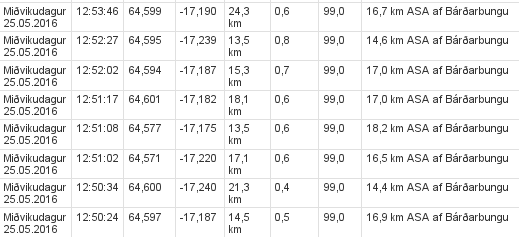
The dyke earthquake swarm. All magnitudes are small, but depth is the interesting part. Screen-shot from Iceland Met Office website.
The dyke earthquake swarm has different pattern. As the magma pushes up the dyke from deep it creates earthquakes along the weak points in its structure, making the depth appear at random as earthquakes are formed. This also expands the dyke a little, low amount of earthquakes indicates that there is not much of a resistance in the dyke where it is expanding at the moment.
Donations
Please remember to support my work so I don’t have to worry about bills and other money connected issues so much. Thanks for the support. 🙂
